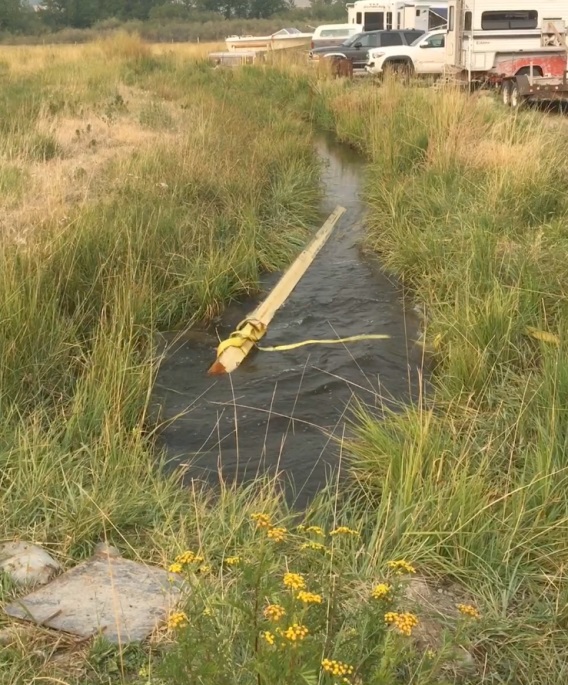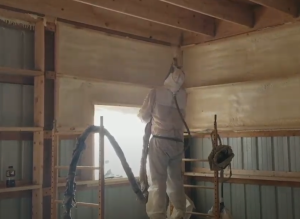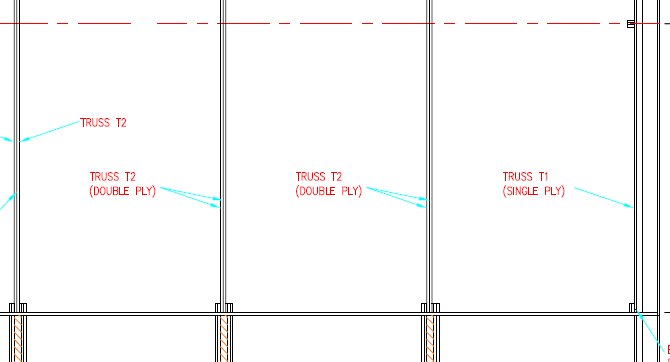What is Wainscot?
Welcome to our newest feature: Ask the Pole Barn Guru – where you can ask questions about building topics, with answers posted on Mondays. With many questions to answer, please be patient to watch for yours to come up on a future Monday segment.
Email all questions to: PoleBarnGuru@HansenPoleBuildings.com
DEAR POLE BARN GURU: Where did the term wainscot originate and what exactly is wainscot? BAFFLED IN BROWNS VALLEY
DEAR Baffled: So nice (and rare) to get an inquiry from the area where Hansen Pole Buildings is based.
By common definition, the term wainscot is the lower portion of an interior wall whose surface differs from that of the upper wall. Wainscot was borrowed from the Middle Low German wagenschot. It is not altogether clear what the origins of this were, but the generally accepted theory is it is a compound of wagen ‘waggon’ and schot ‘planks, boards’, and it therefore originally meant ‘planks used for making waggons’. Originally it was applied in English to ‘high-grade oak imported from Russia, Germany, and Holland’. This wood was used mainly for paneling rooms, and by the 16th century wainscot had come to signify ‘wood paneling’.
Homeowners used to apply wainscoting, especially in dining rooms, to protect the walls from damage from chairs and tables. The chair rail atop the wainscoting serves as a “bumper,” protecting the wall from dings and chips created when a chair or table gets a little too chummy. This wall decoration was often also used to add interest and texture to stairways, while protecting them, too. In fact, it first grew in popularity during Elizabethan times, and it’s quite common in historic English and American Colonial homes.
In the case of a post frame (or pole) building, wainscot has moved to the exterior of the building. In simple terms, it is the utilization of an alternate siding panel to cover the lower approximately three feet of the exterior walls. The most common application, with steel sided buildings, is to use a different color steel panel on the lower wall than the upper. This allows for an aesthetic look many find pleasing, while affording the ability to quickly and easily change out a short steel panel, in the event it would become damaged. This would prove to be the most cost affordable wainscot.
Alternatively, other materials may be utilized, such as T1-11, cement based sidings, vinyl siding or even stone or brick. Pretty much any siding which can be applied on the exterior of any other building, can be incorporated as pole building wainscot.
DEAR POLE BARN GURU: I’m interested in learning whether your company can build an asymmetrical, or “salt box” structure with a loft/2nd floor. SEASONED AT ST. SCHOLASTICA
DEAR Seasoned: The saltbox style barn has been popular since the colonial era. A slope down roof design is distinctive to saltbox architecture. Originally, the saltbox style was designed solely for function. The conservative space combined with the sloped roof contain heat well and serve as a windbreak.
While the function of the saltbox style pole building offers supreme functionality, most choose the saltbox style barn for the quaint style and rustic look of the buildings. During past centuries, salt was purchased and stored in containers sharing the same shape, thus coining the nickname for the building style.
To give a practical example of how to create the “salt box” look….picture a 24 foot wide building, with an 18 foot eave height (this being tall enough for two eight foot ceilinged floors). For sake of discussion, we will give the building an 8/12 roof slope.
Along one eave wall (the side rain would drip off), is placed a 12 foot wide “side shed”. The wall between the side shed and the main 24 foot wide building would be open, with the entire perimeter (typically) of the total 36 foot width building enclosed. Keeping the roof slope the same on the shed as the main building, the low side of the shed would be at ten feet.
So, in looking at the end of the building, one wall is 18 feet tall, the other 10. The peak of the roof is offset as it is 12 feet from the tall wall, 24 feet from the low wall. It provides the asymmetrical “salt box” look, and allows for a functional second floor.
Obviously a myriad of different dimensions and roof slopes can be combined to adjust for need, budget and available space.
To answer your original question – yes, we can design a building kit to accommodate a
“salt box” style with a loft – or just about any type of custom design, as long as it structurally can be done and meets code criteria. We will also do sketchups (computerized drawings) of your design – until you get the function, and “look” you are after.
DEAR POLE BARN GURU: I’m building a house with pole barn design in mind for the structure. IS there a rule of thumb for post and beam size in relation to span length to figure out what I need to use for desired post spacing? Thanks! ROCK ISLAND LINE
DEAR ROCK: I’m going to give your fairly simple appearing question, with a fairly long winded answer. With lots of parts.
Starting with post spacing – in most instances placing columns every 12 feet is the most economical for use of materials and gives a great deal of flexibility for locating doors and windows. A side benefit is – fewer holes to dig than placing columns at say eight foot on center.
Every what?!
As soon as I say “every 12 feet” I can hear a few folks (usually builders) from the upper Midwest scoff and exclaim “you can’t put poles every 12 feet”! Well, the fact is – you can. It’s been done for years….all over the United States with excellent results. Buildings do not fail. Without getting off on that discussion, at this point if you want to read more about this controversy – go to the Search field in the upper righthand of this page and input “single truss system” which brings up several blogs about this topic.
Back to the question….
While there is not a “rule of thumb” there is a formula which can be used to calculate simple beams (wall girts and roof purlins are simple beams, columns can be if the roofing and siding is installed to create an adequate diaphragm). The formula is WL^2 / 8, where W is the applied load and L is the span (which needs to be squared).
Starting to sound “not so easy”? The reality is…it is not. Proper pole barn/pole building/post frame design is a highly complex process involving a myriad of calculations to verify all members are adequately sized and connections proper to adequately carry the climactic loads which will be placed upon them.
As the television commercial says, “Do not attempt this on your own”.
Pole building design is best done by an RDP (Registered Design Professional – architect or engineer). It may seem like doing the design yourself (or based upon input from people who really do not know) will save money. The reality of the situation is most people who do their own design work spend more money on materials they really do not need, while making crucial under design errors which could result in building failure. Beefing up one portion of a building (larger columns) does nothing to add to the resiliency of the building if you don’t beef up all of the other connections and associated parts (purlins/girts).
Again – best if you ask a design professional to design your building, and insist upon sealed plans, so the calculations are true and correct. I never compromise the safety of my loved ones, human or otherwise to “save a little money” on something as critical as the roof over my head.









